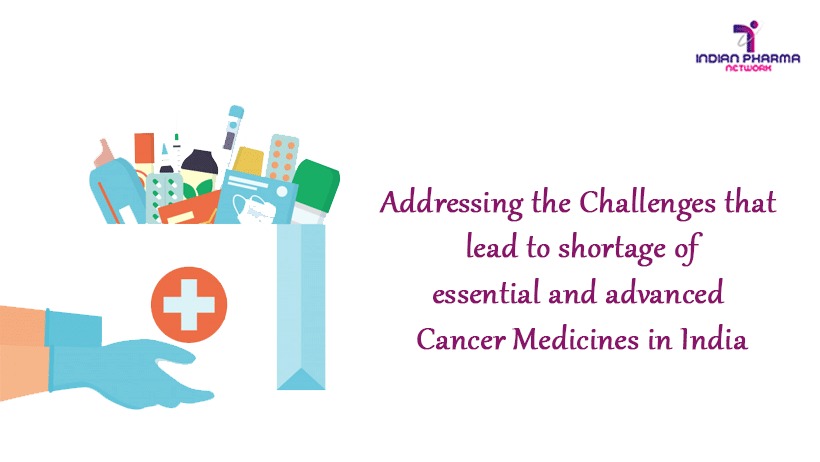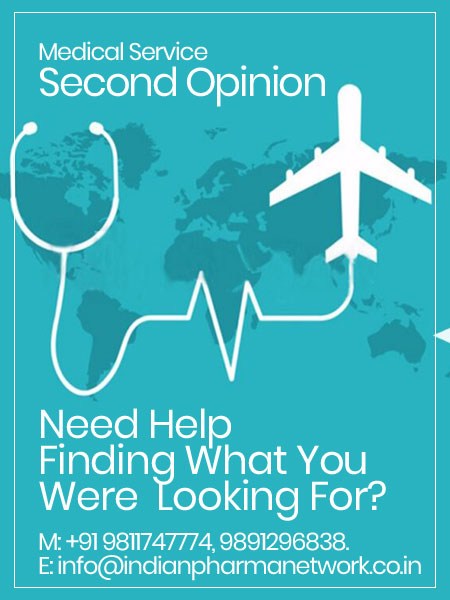Addressing the Challenges that Lead to shortage of Essential and Advanced Cancer Medicines in India
Globally, cancer is the second leading cause of death, with cases exceeding those for human immunodeficiency virus or acquired immunodeficiency syndrome, tuberculosis, and malaria combined. Some of the major disparities in cancer survival include limited access to timely diagnosis, affordable and effective treatment, and high-quality care between countries and within countries.
Despite India being the largest producer of generic medicines in the world, there is a lack of availability of essential anti-cancer drugs for treating childhood cancers. According to the WHO survey, “mean availability of essential anti-cancer medicines across all hospitals and pharmacies was less than WHO’s itself target of 80%. Today, we will be going to address the challenges that revolve around the shortage of essential and advanced cancer medicines.
Notable unreliability that surrounds the grade of clinical benefit offered by new medicine
As the new products and treatments are frequently approved in earlier phases of development, the data from non-randomized trials may lead to the overestimation of clinical benefit. To facilitate rapid access to essential and advanced therapies, this fast drive is organized. Therefore, to determine the value of these products and make confident decisions on coverage and price, entry agreements should be designed in a more harmonized approach across countries.
- Harsh Realities of Indian Healthcare System
According to the World Health Organization, the private healthcare sector in India caters to 80% of outpatient and 60% of inpatient care. As a result, patients are forced to purchase expensive, inappropriate medicines from the market. Approximately, 348 drugs are listed in the national list of essential medicines of India. But due to inadequate budgetary provision for healthcare, there is a lack of comprehensive policies on medicines, and a weak regulatory framework that allows medicines to be produced, promoted and prescribed without assurance of their rationality, quality, or reasonableness of price.
- Drug makers and pharmaceutical trading agencies create a biased opinion in the mind of customers
Pharmaceutical experts create an impression that branded generics are vastly superior to Unbranded generics. Even medical professionals consider Unbranded generics to be substandard medicines. Hence, to produce the confusion, branded generics in India have been artificially divided by academicians and policymakers into two categories: branded products, which apparently refer to drugs made by reputed companies and promoted through doctors, and so-called branded generics, drugs apparently made by less reputed companies and promoted through retailers.
- The need for evidence-based drug approval and improved access to essential medicines
India’s pharmaceutical industry have acquitted themselves very creditably on the global platform. Globally, Indian generics account for about 40% of the anti-retroviral medicines. Worldwide, these low-cost high-quality medicines are a lifeline to millions of people. Above-mentioned numbers look impressive but due to budget crunch, funds are frequently spent on ineffective, unnecessary, or dangerous medications. The money spent on overpriced medicines is very often also a waste of precious resources.
- Need of transparency in the approval process
Drug regulatory agencies all over the world approve medicines for use in their countries based on an evidence-based process that evaluates the data on their efficacy (obtained through randomized controlled trials) and safety. In India, with the public health problems that we face, the widespread poverty, and high out-of-pocket expenditure incurred by patients, the drug regulatory authorities have an additional responsibility: to ensure that the medicines being approved for manufacture serve the public health needs of the country and are cost-effective.
According to the parliamentary committee which drew attention to a collusive nexus between drug manufacturers, some of the Central Drugs Standard Control Organisation (CDSCO) functionaries and some medical experts resulted in irregular drug approvals. There is a need to make the process of approving and banning FDCs (Fixed Dose Drug Combinations) to be more transparent and fairer. In general, if an FDC isn’ t approved anywhere in the world, it may not be cleared for use in India unless there is a specific disease or disorder prevalent in India, or a very specific reason backed by scientific evidence and irrefutable data applicable specifically to India that justifies the approval of a particular FDC. The Committee strongly recommends that a clear, transparent policy may be framed for approving FDCs based on scientific principles.
Conclusion
Various strategies at many different levels are being discussed and implemented to address the challenges which will help in managing the essential and advances oncology medicines. In India, there is a need of comprehensive and cost-based system to address the anarchy of drug prices which are in dire need of medicines. The process of drug approval needs to be rigorous, evidence-based, transparent, and in line with the interests of public health in India.
The government should address the lack of single-ingredient essential medicines in India for priority health conditions. All FDCs which lack a pharmacological rationale, contain ineffective or hazardous combinations, they should be not allowed or removed from the market.
References:
- https://www.livemint.com/science/health/indians-have-poor-access-to-essential-anti-cancer-drugs-report-1556108795781.html
- https://www.medicalbuyer.co.in/indians-have-poor-access-to-essential-anti-cancer-drugs/
- https://acsjournals.onlinelibrary.wiley.com/doi/full/10.3322/caac.21597
- https://ijme.in/articles/the-crisis-in-access-to-essential-medicines-in-india-key-issues-which-call-for-action/?galley=html


